


What has become of slum children?
21 February 2018
The new paths of economic science
1 April 2018Pierre Grosser is an expert in international relations, particularly the Cold War. In his latest book, L’Histoire du Monde se fait en Asie. Une autre vision du XXe siècle* [The History of the World is Asian. Another vision of the 20th century], 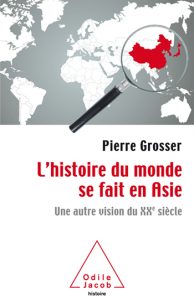 he goes over the role of Asian countries in the history of the 20th century. It is a history that invites us to rethink the geopolitics of yesterday, today and tomorrow. The major insights are shared below.
he goes over the role of Asian countries in the history of the 20th century. It is a history that invites us to rethink the geopolitics of yesterday, today and tomorrow. The major insights are shared below.
While the growing significance of Asia in the world is recognized today, you assert that we underestimate the role that it has already played in the 20th century
Yes, we hear about the economic weight of China and India every day, and about the diplomatic and strategic games of Asia’s big powers.
The global importance of Asia, and particularly China, has become self-evident, but it is considered a novelty. In reality, Asia has played a very important role in the world throughout the 20th century. The purpose of my book is to serve as a reminder of this, and even sometimes dig up the past.
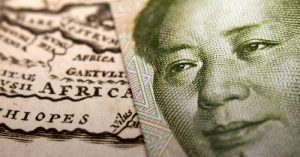 For example, France’s African policy takes into account China, whose growing influence is being scrutinized on the whole continent. In reality, China’s first steps in Africa date bask to the 1960s. Another example is that it was not until the 1980s – when Japan started exporting its products and investing abroad – that the Wet became conscious of economic globalization.
For example, France’s African policy takes into account China, whose growing influence is being scrutinized on the whole continent. In reality, China’s first steps in Africa date bask to the 1960s. Another example is that it was not until the 1980s – when Japan started exporting its products and investing abroad – that the Wet became conscious of economic globalization.
Finally, Western companies today fear the weight of China while dreaming of conquering its market. But it is important to remember that this dream and fear are longstanding ones: in the 1900s the West feared that a modernized China would flood its market with low-cost products. There was talk of a demographic and economic “yellow peril”.
You claim that Japan’s victory over Russia in 1905 was key factor in the outbreak of the First World War
The French focus on Franco-German relations to explain 1914. In the United States, the war is presented as resulting from Germany’s challenge to British hegemony. I show that we need to de-Europeanize our vision of the buildup to the war by remembering that international relations were dominated by Anglo-Russian rivalry over Asia.
![Retreat of the Russian Army after the Battle of Mukden by P. F. Collier & Son [Public domain], via Wikimedia Commons Retreat of the Russian Army after the Battle of Mukden by P. F. Collier & Son [Public domain], via Wikimedia Commons](https://www.sciencespo.fr/research/cogito/wp-content/uploads/2018/03/800px-Retreat_of_the_Russian_Army_after_the_Battle_of_Mukden-300x191.jpg) In 1902 the United Kingdom entered into an alliance with Japan to contain Russia’s advances in Asia. Three years later, Japan and Russia went to war and, against all odds, Russia lost. Its weakening fundamentally changed the balance of power and led to a United Kingdom – France – Russia – Japan alignment that isolated Germany.
In 1902 the United Kingdom entered into an alliance with Japan to contain Russia’s advances in Asia. Three years later, Japan and Russia went to war and, against all odds, Russia lost. Its weakening fundamentally changed the balance of power and led to a United Kingdom – France – Russia – Japan alignment that isolated Germany.
It is not until after this redistribution of cards that the war truly became European. Russia sought a “do-over” in the Balkans; it alarmed Germany and France regained confidence. All of these elements shaped the antagonisms. Thus, the repercussion of conflicts around Asia should not be neglected as one of the structural causes of World War I.
Similarly, you draw attention to the importance of USSR/Chinese/Japanese relations during the 1930s in establishing the alliances that formed on the eve of World War II.
In order to understand the position of Asia and of the rest of the world in the conflict, it is important to go back to 1929, !["Les bons amis les Trois" publié au Japon en 1938. En haut, les photos de Hitler, de Premier Ministre Konoe et de Mussolini. See page for author [Public domain], via Wikimedia Commons "Les bons amis les Trois" publié au Japon en 1938. En haut, les photos de Hitler, de Premier Ministre Konoe et de Mussolini. See page for author [Public domain], via Wikimedia Commons](https://www.sciencespo.fr/research/cogito/wp-content/uploads/2018/03/1938_Naka_yoshi_sangoku-197x300.jpg) when the Soviet Union was waging a war in China over control of the Eastern Chinese railroad. It is in the aftermath of this conflict, in which the Red Army was victorious, that the Japanese invaded Manchuria in 1931. Japan worried iStalin, who feared the threat from Japan more than that from Germany. The cooperation between Germany and Japan via the anti-Comintern pact of 1936 was also a key moment. The German-Soviet pact of 1939 cannot be understood without taking into account the Soviet-Japanese war as well as the Anglo-Japanese crisis in China that took place at the same time. Japan’s decision not to attack the USSR at the same time as Germany in the summer of 1941 was also crucial. By attacking Pearl Harbor in December, the Japanese aimed to eliminate the American navy’s ability to deploy in Southeast Asia. Japan’s goal was to seize the British and Dutch colonies. They were also in conflict with the US, which supported China in order to prevent Japan’s expansion. It is with Germany’s declaration of war against the United States that the wars in Asia and in Europe merged. Balancing the European and Asian theaters of war subsequently generated tensions among the Allies.
when the Soviet Union was waging a war in China over control of the Eastern Chinese railroad. It is in the aftermath of this conflict, in which the Red Army was victorious, that the Japanese invaded Manchuria in 1931. Japan worried iStalin, who feared the threat from Japan more than that from Germany. The cooperation between Germany and Japan via the anti-Comintern pact of 1936 was also a key moment. The German-Soviet pact of 1939 cannot be understood without taking into account the Soviet-Japanese war as well as the Anglo-Japanese crisis in China that took place at the same time. Japan’s decision not to attack the USSR at the same time as Germany in the summer of 1941 was also crucial. By attacking Pearl Harbor in December, the Japanese aimed to eliminate the American navy’s ability to deploy in Southeast Asia. Japan’s goal was to seize the British and Dutch colonies. They were also in conflict with the US, which supported China in order to prevent Japan’s expansion. It is with Germany’s declaration of war against the United States that the wars in Asia and in Europe merged. Balancing the European and Asian theaters of war subsequently generated tensions among the Allies.
In short, as was the case for World War I, the calculations were global and interconnected – a fact that is forgotten in the history that we teach.
It is no accident that the war ended with the bombing of Hiroshima and Nagasaki…
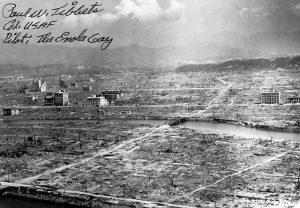 Once again, the agreed history must be revisited. Yes, the Americans launched two atomic bombs on Japan and were relieved by its capitulation. The continuation of the war had started to create internal problems for them. But the Soviet’s entry into war against Japan on August 8 played as great a role as American bombs in explaining the Japanese capitulation. The Russians’ offensive changed the landscape. They held outer Mongolia, Manchuria, Sakhalin and the Kuril islands. They also tried to take Hokkaido and were present in North Korea after the carving of American and Soviet occupation zones. Despite this, Stalin was frustrated because the US had a monopoly over the atomic bomb and was the sole occupier of Japan. This largely explains his intransigence in postwar negotiations and his desire to secure pawns in Europe and the Middle East.
Once again, the agreed history must be revisited. Yes, the Americans launched two atomic bombs on Japan and were relieved by its capitulation. The continuation of the war had started to create internal problems for them. But the Soviet’s entry into war against Japan on August 8 played as great a role as American bombs in explaining the Japanese capitulation. The Russians’ offensive changed the landscape. They held outer Mongolia, Manchuria, Sakhalin and the Kuril islands. They also tried to take Hokkaido and were present in North Korea after the carving of American and Soviet occupation zones. Despite this, Stalin was frustrated because the US had a monopoly over the atomic bomb and was the sole occupier of Japan. This largely explains his intransigence in postwar negotiations and his desire to secure pawns in Europe and the Middle East.
Then comes the role that Asia played in the Cold War via the Korean and Vietnamese wars. These conflicts had a considerable impact at the time and left “traces” that are still vivid today.
Once again, it is important to have a complete picture of international relations. The major turning point was the Korean War (1950-53) – a key moment that remains poorly understood in France. The war militarized, globalized and radicalized the Cold War. It quickly became a direct American-Chinese war. In reality, China became a greater foe than the Soviet Union for the United States. ![President Nguyen Van Thieu of South Vietnam standing in front of world map, during meeting with Lyndon B. Johnson in Hawaii by Yoichi R. Okamoto [Public domain], via Wikimedia Commons President Nguyen Van Thieu of South Vietnam standing in front of world map, during meeting with Lyndon B. Johnson in Hawaii by Yoichi R. Okamoto [Public domain], via Wikimedia Commons](https://www.sciencespo.fr/research/cogito/wp-content/uploads/2018/03/708px-Nguyen_Van_Thieu_with_map_cropped-300x254.jpg) The Korean War explains the protection that the United States provided to Taiwan, the alliances that the US still maintains in the region (especially with Japan and South Korea, but also with Australia). And US support for the French war in Indochina is what led it into the Vietnamese quagmire.
The Korean War explains the protection that the United States provided to Taiwan, the alliances that the US still maintains in the region (especially with Japan and South Korea, but also with Australia). And US support for the French war in Indochina is what led it into the Vietnamese quagmire.
The impact of the Korean War was just as significant in the West. The fear was that the North Korean offensive was a general rehearsal for a Red Army invasion of Europe. This is when NATO became a real organization. Its objective was to reassure the Europeans, who feared that America was focusing too much on Asia. A lot of smoke and mirrors ensued: Americans fought in Asia to be credible to the Europeans. Then the latter, to be credible, increased their military spending, accepted the rearmament of Germany and also fought in Asia: France in Indochina, and the United Kingdom in Malaysia. This fighting made the French and British feel like they were still global powers that could legitimately influence the strategic choices of their American ally. France in 1956 and the United Kingdom in 1971 (except with regard to Hong Kong) had become weary, would soon no longer be Asian powers and no longer supported the US war in Vietnam. To the contrary, de Gaulle recognized China and criticized the Vietnam War in order to regain clout in relation to the United States.
Another key moment was decolonization. India is a prime example, as is the Communist block’s hardly disinterested support for countries in the process of decolonizatioN
Indeed, the Cold War and decolonization intersected. The victory of “little” Japan over Russia in 1905 turned the colonies’ sights to the “Japanese model”. Chinese, Indian and Vietnamese nationalists circulated in Asia and in Europe, using “diaspora” networks. 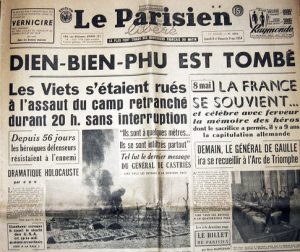 Bolshevik Russia and its anti-imperialist organizations worried the colonizing powers. They were convinced that the “Reds” were trying to rouse the “Yellows” against the “Whites”, to have the Europeans shed their colonies in order to weaken them, and ultimately to provoke crises that would foster revolution.
Bolshevik Russia and its anti-imperialist organizations worried the colonizing powers. They were convinced that the “Reds” were trying to rouse the “Yellows” against the “Whites”, to have the Europeans shed their colonies in order to weaken them, and ultimately to provoke crises that would foster revolution.
In fact, the first wave of decolonization was very Asian. It started at the end of the war, from which it directly resulted. Imperialist France, Britain and the Netherlands wanted to maintain and even retake their colonies that were now in Japan’s hands, and where independence had been proclaimed (Vietnam, Indonesia). Hence the terrible colonial wars, which took on another dimension when the adversary was Communist, as was the case in Vietnam, which was supported by the Chinese. Mao saw himself as spearheading anti-Imperialism. Moscow and Beijing shared the job, with China taking charge of Asia.
Dien Bien Phu, the symbol of defeat of the white Goliath, resonated around the world, notably in Algeria. While the role of the Afro-Asian conference of Bandung in 1955 has been overstated, it did symbolize the affirmation of the South and its solidarity. In reality, the positions of the countries of the South were moderate and the tensions among them were already numerous. The one that crystallized between moderates (led by India) and radicals (ked by China) was the most notable one.
Thus, beyond the vision of a bipolar world, the Third World featured Sino-American, Sino-Soviet and Sino-Indian rivalries,
The 1970s witnessed an alliance between the US and Pakistan, a rapprochement between Mao and Kissinger, the war in Afghanistan, etc.
Indeed, the 1970s were very important. First, a system of crossed alliances around South Asia formed. Pakistan became an ally of China, while India and the Soviet Union became closer. In 1971 Pakistan declared war against India and received support from the United States, which saw an opportunity for a rapprochement with China. ![Henry Kissinger and Chairman Mao, with Zhou Enlai behind them in Beijing, early 70s. By Oliver Atkins (Jiang -original uploader on en wiki) [Public domain], via Wikimedia Commons Henry Kissinger and Chairman Mao, with Zhou Enlai behind them in Beijing, early 70s. By Oliver Atkins (Jiang -original uploader on en wiki) [Public domain], via Wikimedia Commons](https://www.sciencespo.fr/research/cogito/wp-content/uploads/2018/03/Kissinger_Mao-300x210.jpg) The Americans would soon be able to offload some of their anti-Soviet containment in Asia to both China and Japan.
The Americans would soon be able to offload some of their anti-Soviet containment in Asia to both China and Japan.
A few years later, the Cold War reemerged over the Sino-Soviet rivalry. After China and the United States normalized their relationship in 1978 and China attacked Vietnam, a Soviet ally in 1979, the USSR felt encircled. That is why, in 1979, it invaded Afghanistan, which it did not want to lose. The opposite happened: this invasion strengthened ties between the US and China; both supported the Afghani resistance.
Throughout this whole period Communist solidarity was tested by rivalries between the Soviet Union, China, Vietnam and Cambodia. The Cold War’s binary logic was overturned. Moreover, Cambodia’s genocidal violence, its invasion by Vietnam and the boat people placed the final nail in the coffin of Communism and ThirdWorldism in the West. Finally, China started focusing on its economic development and needed a stable environment to do so.
Is this when economics make an appearance?
Indeed, Japan experienced high growth in the 1960s, notably because the US opened its market to Japan. The first trade frictions arose between the Americans, Europeans and Japanese.
At the same time, after the death of Mao, Chinese leaders realized how backward their country was after visiting the United States and Japan. “Missionaries” were sent everywhere to the West and the East to think about reform. They wanted to obtain transfers of technology and were counting on the United States and Japan to provide them. Another goal was to modernize their army since the war against Vietnam in 1979 had revealed its limitations. Meanwhile the US and Japan set their sights on Chinese oil as the Middle East was entering a turbulent period.
You believe that the Tiananmen massacre played a major role in the collapse of the Eastern block
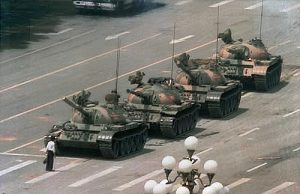
It played a smaller role in the causes of its collapse than in its modalities, which were mostly peaceful. The crackdown was a truly global event. The question then became whether Eastern European leaders would act in the same way as the Chinese. In the GDR, for example, authorities entered a honeymoon phase with the Chinese, while East European demonstrators took to the streets with pits in their stomachs.
While Gorbachev did not condemn the crackdown, he did not believe in violence and warned the leaders of his brethren countries that they should not expect Soviet intervention in the even of disorder. Despite the temptation to crack down, Eastern European elites chose not to follow the “Chinese way”. Meanwhile, President Bush remained careful because he feared that excessively strong support for reformers and demonstrators in Eastern Europe might provoke another Tiananmen.
Today economic relations and North Korea appear to be dominating relations between Asia and the rest of the world.
 The first question has to do with Asia itself. Since 1979 a quasi “pax asiatica” has existed. Since then the continent of wars, of human catastrophes and internal massacres (30 to 45 million died during the Great Leap Forward, 1 million were killed during the Indonesian massacres of 1965-66, 1.7 million were killed under the Red Khmer regime, etc.) has been relatively calm. It is now in the Middle East that American soldiers are dying rather than the Far East. Is this thanks to the balance of power, to the “pax americana”, to the moderation of countries focused on economic growth, to economic interdependence, to the ageing of a population that no longer sacrifices its few children, or to the diplomatic norms of the Association of Southeast Asian countries? China claims that the peace will continue if it remains at the center, as it has in the past, before Western intrusion. At the same time tensions exist between China, India, Japan, Taiwan, tn he South China Sea and with North Korea.
The first question has to do with Asia itself. Since 1979 a quasi “pax asiatica” has existed. Since then the continent of wars, of human catastrophes and internal massacres (30 to 45 million died during the Great Leap Forward, 1 million were killed during the Indonesian massacres of 1965-66, 1.7 million were killed under the Red Khmer regime, etc.) has been relatively calm. It is now in the Middle East that American soldiers are dying rather than the Far East. Is this thanks to the balance of power, to the “pax americana”, to the moderation of countries focused on economic growth, to economic interdependence, to the ageing of a population that no longer sacrifices its few children, or to the diplomatic norms of the Association of Southeast Asian countries? China claims that the peace will continue if it remains at the center, as it has in the past, before Western intrusion. At the same time tensions exist between China, India, Japan, Taiwan, tn he South China Sea and with North Korea.
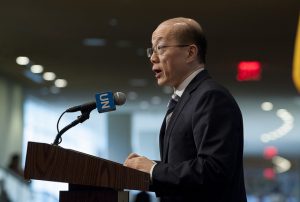 The other question is that of Chinese hegemony replacing US hegemony. One might note the growing assertiveness and confidence of China, which claims to have a benevolent role in the world. Meanwhile the United States, yesterday’s imperialists, is in decline and is unilateralist. The West is exploring options to counterbalance China, particularly by supporting Japan and India. It is debatable whether China wants to keep the rules of the game – such as those of the WTO – that have allowed it to become a major power, whether it wants to have a greater say in international institutions or whether it would like to circumvent them and create new ones. Elites across the whole world see opportunities in Chinese wealth, as well as a threat. In short, in all respects, the future of the world will depend on Asia, especially China.
The other question is that of Chinese hegemony replacing US hegemony. One might note the growing assertiveness and confidence of China, which claims to have a benevolent role in the world. Meanwhile the United States, yesterday’s imperialists, is in decline and is unilateralist. The West is exploring options to counterbalance China, particularly by supporting Japan and India. It is debatable whether China wants to keep the rules of the game – such as those of the WTO – that have allowed it to become a major power, whether it wants to have a greater say in international institutions or whether it would like to circumvent them and create new ones. Elites across the whole world see opportunities in Chinese wealth, as well as a threat. In short, in all respects, the future of the world will depend on Asia, especially China.
Pierre Grosser, specialist of history of the international relations is professor and researcher at the Centre for History at Sciences Po. He was the Dean of studies of the Diplomatic Institute of the French Ministry of Foreign Affairs since 2001 until 2009. In 2010, he was awarded the Ambassadors Prize for his book: 1989, l’année où le monde a basculé, Perrin, 2009
- Pierre Grosser, L’Histoire du Monde se fait en Asie. Une autre vision du XXe siècle (Odile Jacob)
- All Pierre Grosser’s publications

![President Nguyen Van Thieu of South Vietnam standing in front of world map, during meeting with Lyndon B. Johnson in Hawaii by Yoichi R. Okamoto [Public domain], via Wikimedia Commons](https://www.sciencespo.fr/research/cogito/wp-content/uploads/2018/03/708px-Nguyen_Van_Thieu_with_map_cropped-708x480.jpg)

